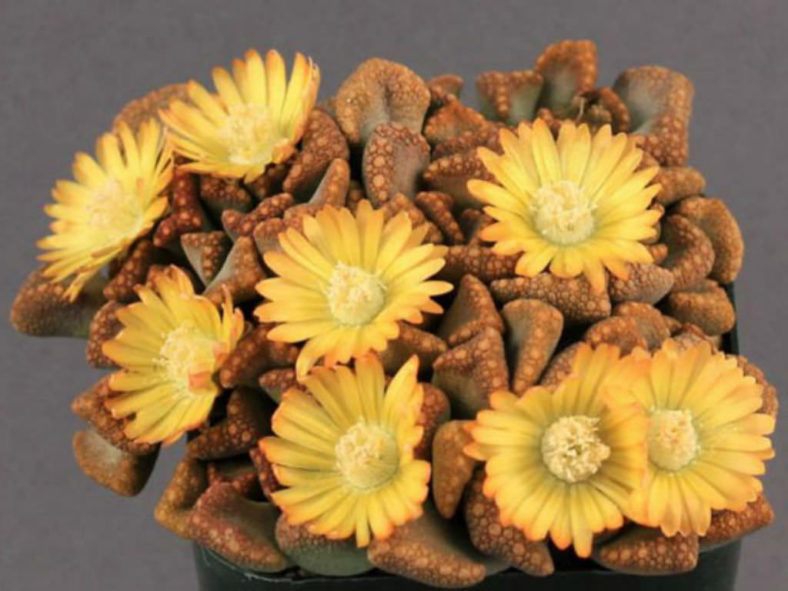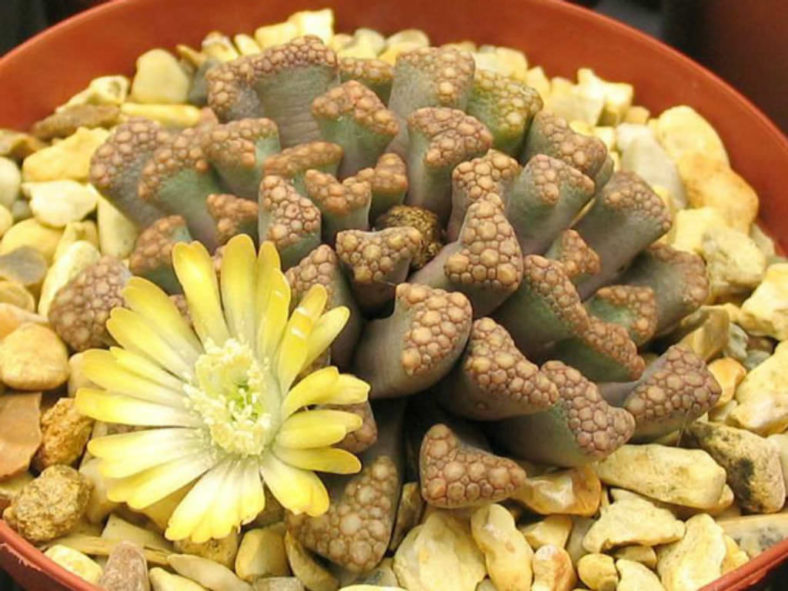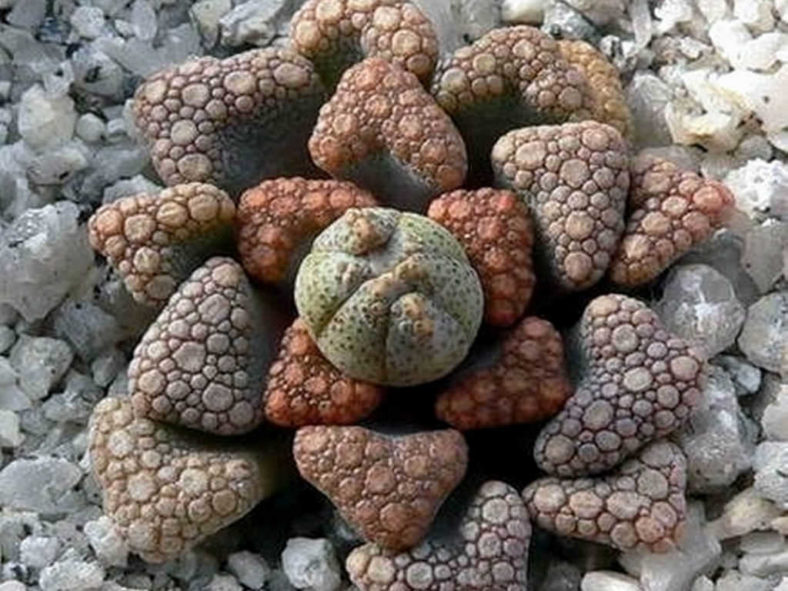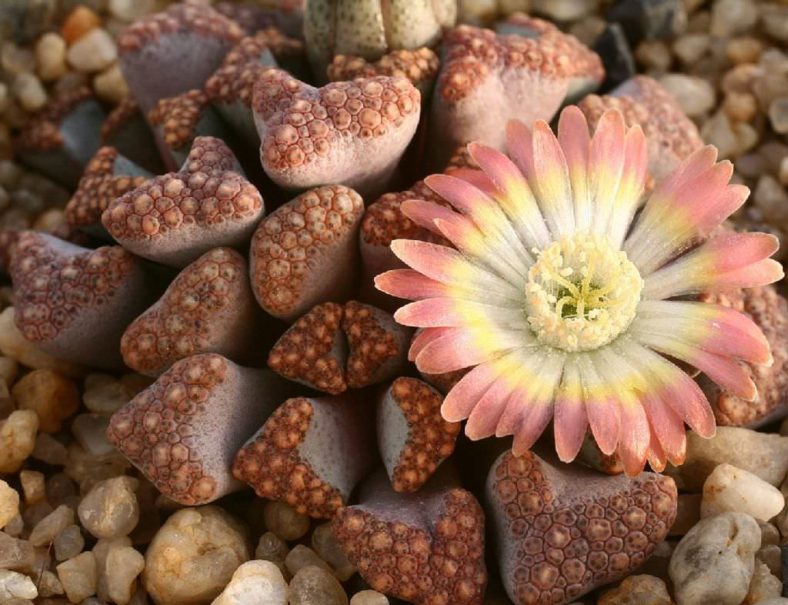Scientific Name
Titanopsis hugo-schlechteri (Tischer) Dinter & Schwantes
Common Name(s)
Jewel Plant, Living Rock
Synonym(s)
Mesembryanthemum astridae, Mesembryanthemum hugo-schlechteri, Verrucifera hugo-schlechteri
Scientific Classification
Family: Aizoaceae
Subfamily: Ruschioideae
Genus: Titanopsis
Etymology
The specific epithet "hugo-schlechteri" (pronounced "hew-GO SCHLEK-ter-eye") honors Hugo Schlechter, a lithographer and father of the German taxonomist and botanist Friedrich Richard Rudolf Schlechter.
Origin
Titanopsis hugo-schlechteri is native to South Africa and Namibia.
Description
Titanopsis hugo-schlechteri is a small succulent that forms clumps of stemless or short-stemmed rosettes of roughly triangular leaves with warty tips. The rosettes can reach a diameter of 2 inches (5 cm). The leaves are thick and fleshy and vary in color from green, blue, grey, and red to purple. The warts are also variable in color, ranging from white to reddish-brown.
The flowers are small, daisy-like, yellow to orange, occasionally pink, and appear in winter.

Hardiness
USDA hardiness zone 10a to 11b: from 30°F (-1.1°C) to 50°F (10°C).
How to Grow and Care
Titanopsis is easy to grow and readily clumps, forming a beautiful succulent mat. The clumps can be divided for further propagation. It needs moderate water when growing in late fall and early spring. Keep it somewhat dry the rest of the time.
Titanopsis maintenance is not difficult. These succulents need a sandy substrate with little organic material. Titanopsis is a winter grower and should be kept relatively dry in summer. They should also be kept dry when temperatures are below 45° F (7°C).
In some cases, division of larger clumps is possible, but as most species have tuberous rootstocks and offsets slowly, seed production is the most common propagation method. Sow it in spring, and it should start flowering after two years.
See more at How to Grow and Care for Titanopsis.
Links
- Back to genus Titanopsis
- Succupedia: Browse succulents by Scientific Name, Common Name, Genus, Family, USDA Hardiness Zone, Origin, or cacti by Genus
Photo Gallery
Click on a photo to see a larger version.


